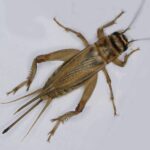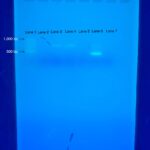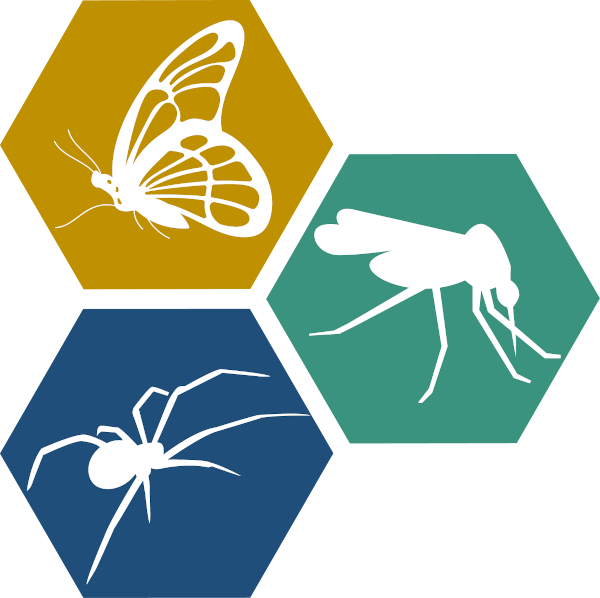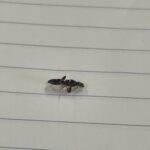Sample information |
|
| Picture |

|
|---|---|
| Location | |
| Collection date | 09/26/2024 |
| Captive / Cultivated? | Captive / Cultivated |
| Group | Palm Beach Atlantic University |
| Observations | Purchased from Petco via brand Timberline Fresh. |
| Putative identification | Arthropoda Insecta Orthoptera Gryllidae Acheta Acheta domesticus |
Methods |
|
| Extraction kit | DNeasy (Qiagen) blood and tissue kit |
| DNA extraction location | Abdomen |
| Single or Duplex PCR | Duplex Reaction |
| Gel electrophoresis system | Standard electrophoresis system |
| Buffer | TAE |
| DNA stain | Other |
| Gel images |

|
| Protocol notes | The PCR products were run along a ThermoFisher Scientific GeneRuler 100 bp Ladder on a 2% agarose gel, as shown in table 3 (ThermoFisher Scientific 2024). 1X TAE was used in the gel and for running buffer, with 20,000X SmartGlow, a BioRad electrophoresis chamber and FisherScientific power source. The gel was run at 100 volts for 35 minutes and visualized using a Spectroline Ultraviolet Transilluminator. |
Results |
|
| Wolbachia presence | No |
| Confidence level | Low |
| Explanation of confidence level | The first arthropod used for DNA extraction in lane 2 did not produce bands from the PCR products, presumably due to lack of grinding the abdominal tissues thoroughly. The second arthropod in lane 3 produced one band, the CO1 gene fragment. It did not produce the 16s rRNA gene fragment. However, these crickets were bred by the company Timberline Fresh and had not been previously been exposed to the natural environment. The parents presumably did not either. |
| Wolbachia 16S sequence | |
| Arthropod COI sequence |
|
| Summary | The Acheta domesticus was found to be negative for Wolbachia. |
 European Paper Wasp
European Paper Wasp Woodworm Ant
Woodworm Ant